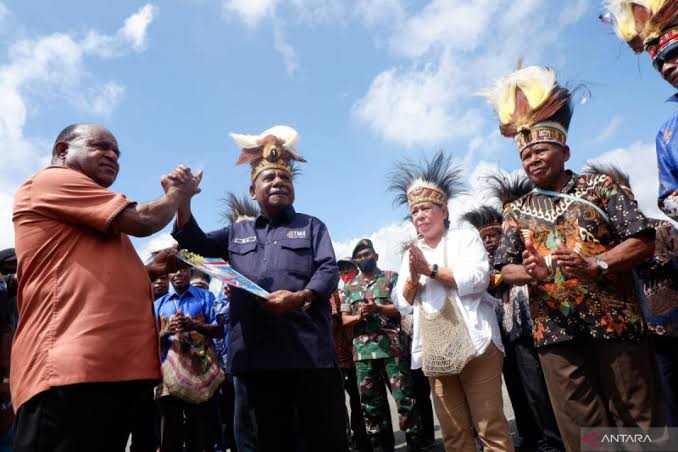Papua, with its stunning natural beauty and rich cultural heritage, is one of Indonesia’s most vital regions. In recent years, collaboration between the government and local communities in Papua has shown significant results in various sectors, such as education, healthcare, infrastructure, and economic empowerment. These achievements highlight how harmonious cooperation can bring positive impacts to regional development.
1. Infrastructure Development Through Local Participation
The development of infrastructure in Papua, such as the Trans Papua Highway, bridges, and airports, has successfully connected remote areas to economic centers. This success is inseparable from the involvement of local communities, who contribute as laborers or through consultations to ensure that these projects meet their needs. Local participation also fosters a sense of ownership towards the development outcomes.
2. Education Programs Based on Local Wisdom
The government has collaborated with indigenous communities to develop educational programs tailored to local needs. One example is the introduction of a curriculum based on local wisdom, teaching Papuan children about their culture, language, and environment. Additionally, the Special Autonomy (Otsus) Papua scholarship program enables Papuan youth to pursue higher education both domestically and abroad.
3. Improved Healthcare Services in Remote Areas
Collaboration between the government and local communities is also evident in the healthcare sector. Programs like “Flying Doctors,” which deploy medical personnel to remote areas, have been supported by local communities who provide information about their region’s conditions and primary needs. Additionally, training for local healthcare workers has created human resources capable of providing sustainable healthcare services.
4. Economic Empowerment and SMEs
Empowering the local economy in Papua has been a priority in this collaboration. The government has provided capital assistance and training to small and medium-sized enterprises (SMEs) in Papua. For example, training in the production and marketing of traditional Papuan crafts such as noken and carvings has gained traction in national and international markets. This program not only increases community income but also preserves local culture.
5. Protection and Promotion of Local Culture
Collaboration between the government and the community is also reflected in the preservation of Papuan culture. Cultural festivals such as the Baliem Valley Festival and Lake Sentani Festival are fully supported by local governments and indigenous communities. These events not only attract tourists but also strengthen the cultural identity of Papuan communities.
6. Challenges and Solutions
Despite numerous achievements, challenges remain, such as access disparities, developing infrastructure, and a lack of skilled personnel in certain sectors. However, through open dialogue, consultations, and community involvement in program planning and implementation, these challenges can be gradually addressed.










